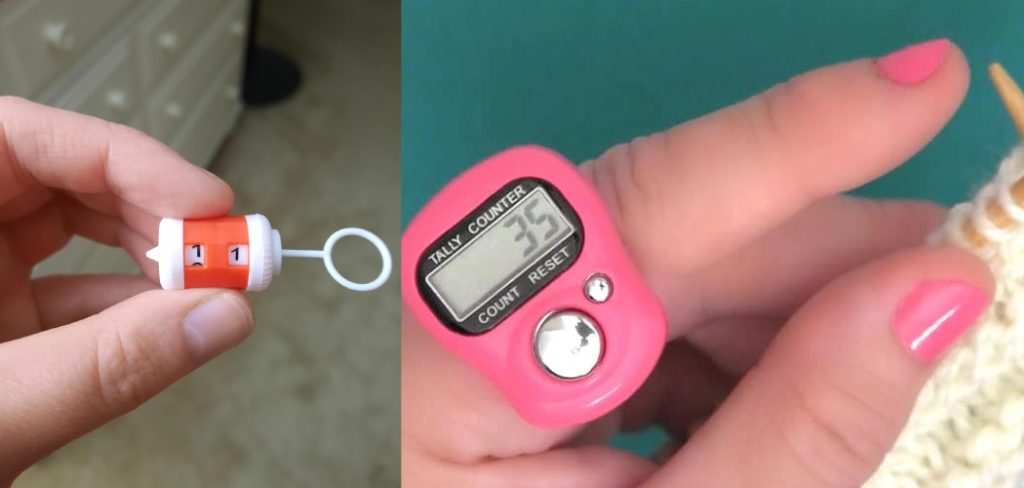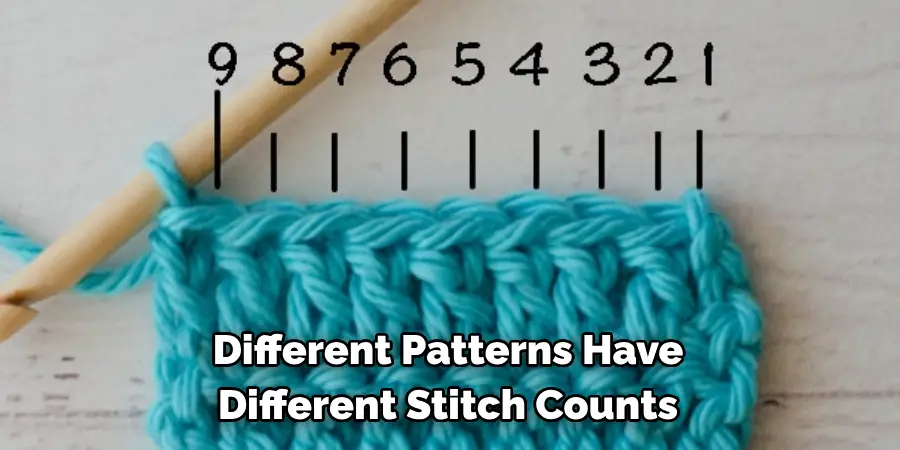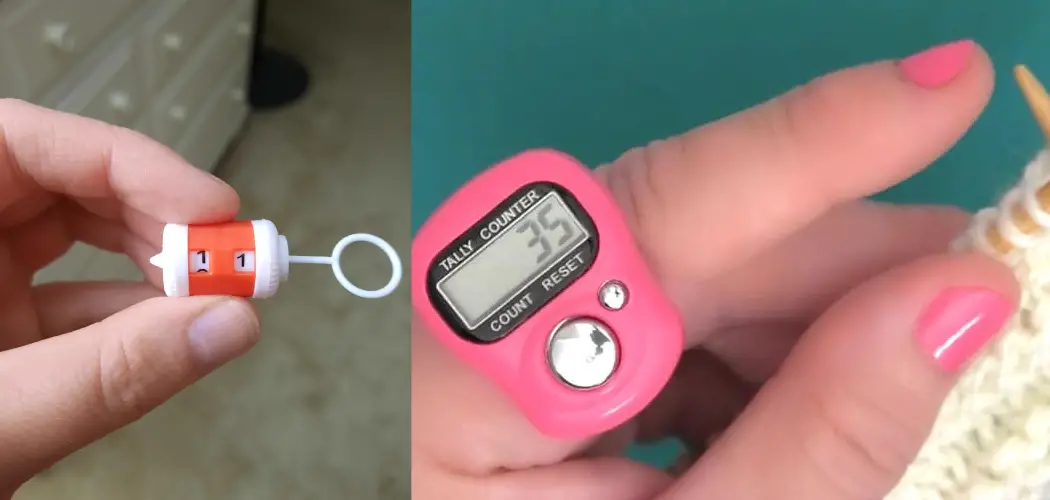Are you one of those crafty-minded people who love to find new hobbies and learn all about their tools? If so, learning to use a stitch counter can be an incredibly valuable skill. Not only is it essential in knitting projects, but it also helps make sure that your event projects are precise, with just the right amount of spacing. Plus, having the ability to keep track of different needles makes counting stitches a breeze! In this post, we’ll go over some basics on how to use a stitch counter like a pro.

What is a Stitch Counter?
A stitch counter is a small tool used in crafting, particularly in knitting and crochet projects. It helps you keep track of the number of stitches you’ve completed in a row or round. Most stitch counters are designed to count up to 99 stitches, making them suitable for various types of projects. They come in different forms, such as digital counters, clicker counters, and even apps for your phone.
Step-by-step Guidelines on How to Use a Stitch Counter
Step 1: Know Your Stitch Pattern
Before you start counting stitches, it’s crucial to understand the stitch pattern you’re working on. Different patterns have different stitch counts per row or round, so make sure you know the correct number before starting. This is especially important if you’re working on a complex pattern with multiple repeats.

Step 2: Set Your Stitch Counter
Once you have your stitch pattern figured out, it’s time to set your stitch counter. For digital counters and apps, simply input the desired number of stitches and press start. For clicker counters, make sure the counter is set to zero before starting. While some counters automatically reset to zero after each click, others require manual resetting.
Step 3: Begin Counting Stitches
As you work on your project, use your stitch counter to keep track of the number of stitches completed in each row or round. Simply click or press the button on your counter for each stitch. Make sure to double-check the count after completing each row or round to ensure accuracy. If you happen to lose track, don’t worry! You can always go back and count the stitches manually.
Step 4: Reset Your Counter
Once you’ve completed your desired number of rows or rounds, it’s time to reset your stitch counter for the next set. For digital counters and apps, simply input the new number of stitches and press start again. For clicker counters, make sure to reset the count back to zero. Make sure to reset your counter before starting the next set to avoid any confusion or mistakes. If you’re working on a project with multiple repeats, make sure to keep track of how many sets you’ve completed using your stitch counter.
Following these simple steps will help you make the most out of your stitch counter and keep your knitting projects on track. With practice, using a stitch counter will become second nature, and you’ll be able to focus more on your crafting skills without worrying about keeping track of stitches. So go ahead, grab your project, and start counting like a pro! Happy crafting!
Additional Tips and Tricks to Use a Stitch Counter
1. When working on a project that requires multiple stitch counts, it’s helpful to use different colored stitch markers for each count. This will make it easier to keep track of which stitches belong to which count.
2. If your stitch counter has a reset button, be sure to press it after finishing each section or row. This will ensure that you start with the correct count for the next section.
3. If you’re using a digital stitch counter, make sure to keep extra batteries on hand in case they run out during your project. It’s also a good idea to have a backup manual stitch counter just in case.

4. Some stitch counters come with a lock feature, which can be useful if you’re working on a project that requires you to constantly move around. This will prevent the counter from accidentally getting reset or changing counts.
5. Don’t forget to double-check your stitch count before and after each section or row. It’s easy to get distracted while knitting or crocheting, so it’s always better to be safe than sorry.
6. If you’re working on a project that involves counting repeats of a specific pattern, it may be helpful to write out the pattern and use tick marks to keep track of each repeat. This can prevent mistakes in counting and help you stay organized.
7. For more complex projects with multiple stitch counts, consider using a row counter in addition to a stitch counter. This will allow you to keep track of both the number of stitches and the number of rows, making it easier to follow a pattern and avoid mistakes.
8. If you’re using a stitch counter with a clip, be sure to attach it securely to your project so that it doesn’t accidentally fall off or get lost.
9. When working on projects with different stitch counts on the same row, use the stitch counter for the larger count and manually keep track of the smaller count. This will help you avoid confusion and potential mistakes.
10. Finally, always make sure to read the instructions that come with your stitch counter carefully. Every counter is different and may have unique features or functions that can improve its use.

By following these additional tips and tricks, you’ll be able to make the most out of your stitch counter and ensure accurate stitch counts for all your knitting and crocheting projects. Happy counting!
Precautions Need to Be Followed for Using a Stitch Counter
1. First and foremost, make sure to have a clear understanding of how the stitch counter works and its purpose. This will help in effectively using the tool and avoid any mishaps or mistakes.
2. Always use a stitch counter specifically designed for knitting or crocheting projects. Using other types of counters may not give accurate results.
3. Keep the stitch counter clean and free from any debris or dust. This will ensure accurate counting and prevent any damage to the tool.
4. Make sure to reset the stitch counter before starting a new project or after finishing each row/round. This will ensure that the count starts from zero and avoids any confusion.
5. It is recommended to use a different colored stitch counter for each project, especially if working on multiple projects at once. This will help in keeping track of the progress of each project.
6. Avoid dropping or mishandling the stitch counter, as it may damage the internal mechanism and affect its accuracy.
7. If using a digital stitch counter, make sure to change the batteries regularly and keep them charged for accurate counting.
8. Keep the stitch counter within reach while working on a project, as it will be easier to track the count and prevent any mistakes.
Following these precautions will ensure the proper use of a stitch counter and help in making knitting or crocheting projects more organized and hassle-free. Remember to always follow the manufacturer’s instructions for best results. Happy counting!
Frequently Asked Questions
How Do I Use a Stitch Counter?
Using a stitch counter is easy! Simply attach it to your knitting needles or crochet hook and press the button each time you make a stitch. The counter will automatically increase by one, allowing you to keep track of your progress. You can also reset the counter to zero if needed.
Are There Different Types of Stitch Counters?
Yes, there are different types of stitch counters available in the market. Some come in a traditional style with a mechanical clicker, while others are digital and offer advanced features such as multiple counters for different projects and the ability to save your counts.
Do I Need a Stitch Counter?
While not necessary, a stitch counter can be very helpful in keeping track of your stitches, especially for more complex patterns. It eliminates the need to manually count and allows you to focus on your knitting or crocheting without interruptions.

Can I Use My Phone as a Stitch Counter?
Yes, there are many stitch-counting apps available for smartphones. However, using a physical stitch counter may be more convenient and reliable as it does not require a battery or internet connection.
How Do I Choose the Right Stitch Counter?
When choosing a stitch counter, consider your personal preferences and needs. Some factors to consider include size, type (mechanical or digital), and additional features such as a lock function or multiple counters. It is always helpful to read reviews and ask for recommendations from fellow knitters and crocheters.
Conclusion
All in all, knowing how to use a stitch counter can greatly enhance your knitting and crocheting experience. It saves time, eliminates the risk of losing track of stitches, and allows you to focus on the creative and enjoyable aspect of your project. With a variety of stitch counters available, finding one that suits your needs is easy. So why not give it a try and see how much easier it makes your crafting journey? Happy stitching!

